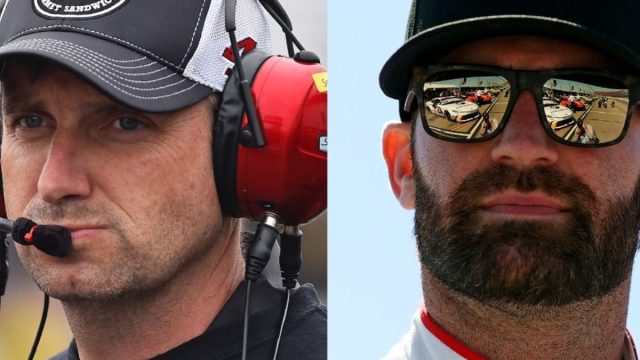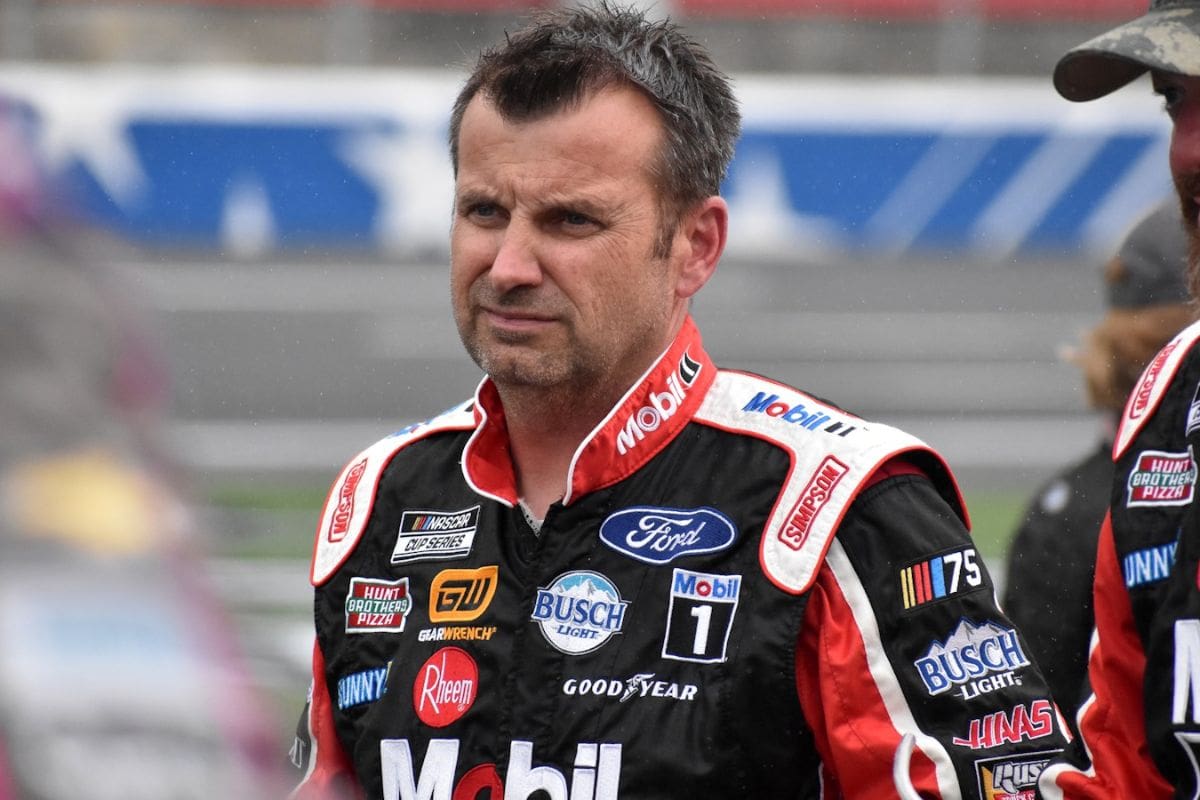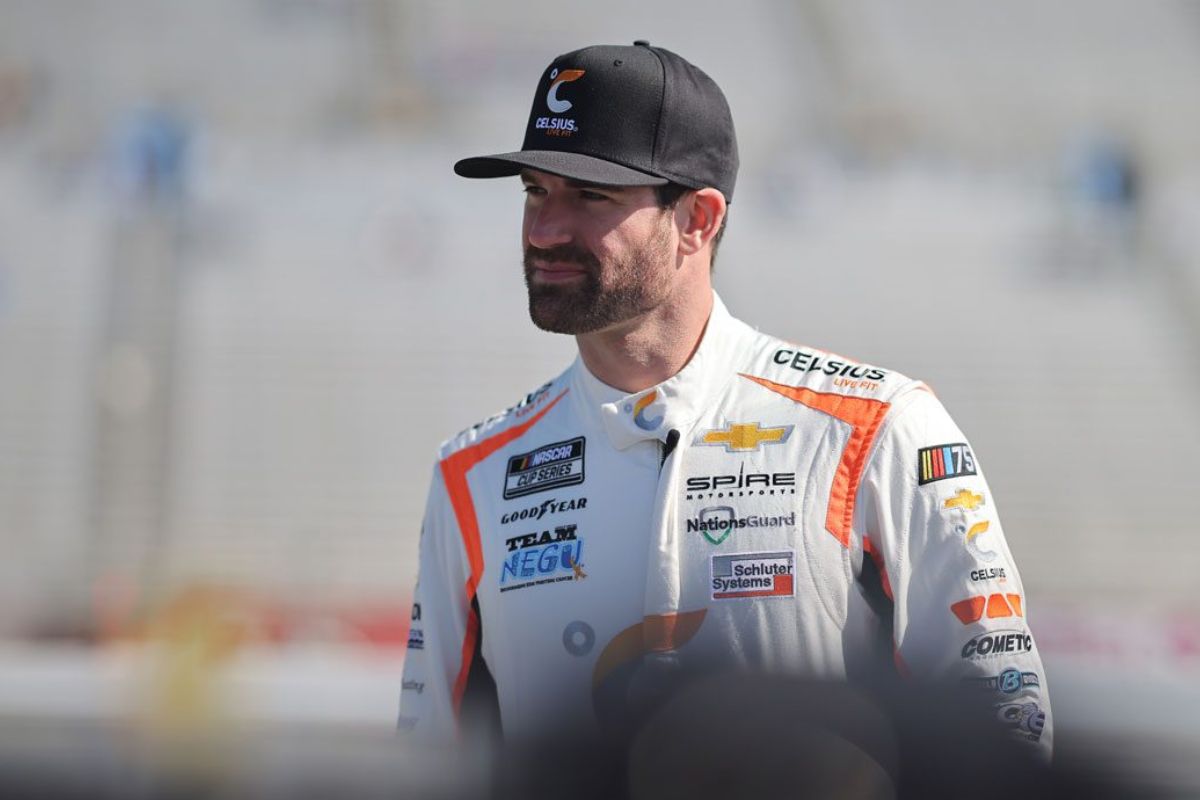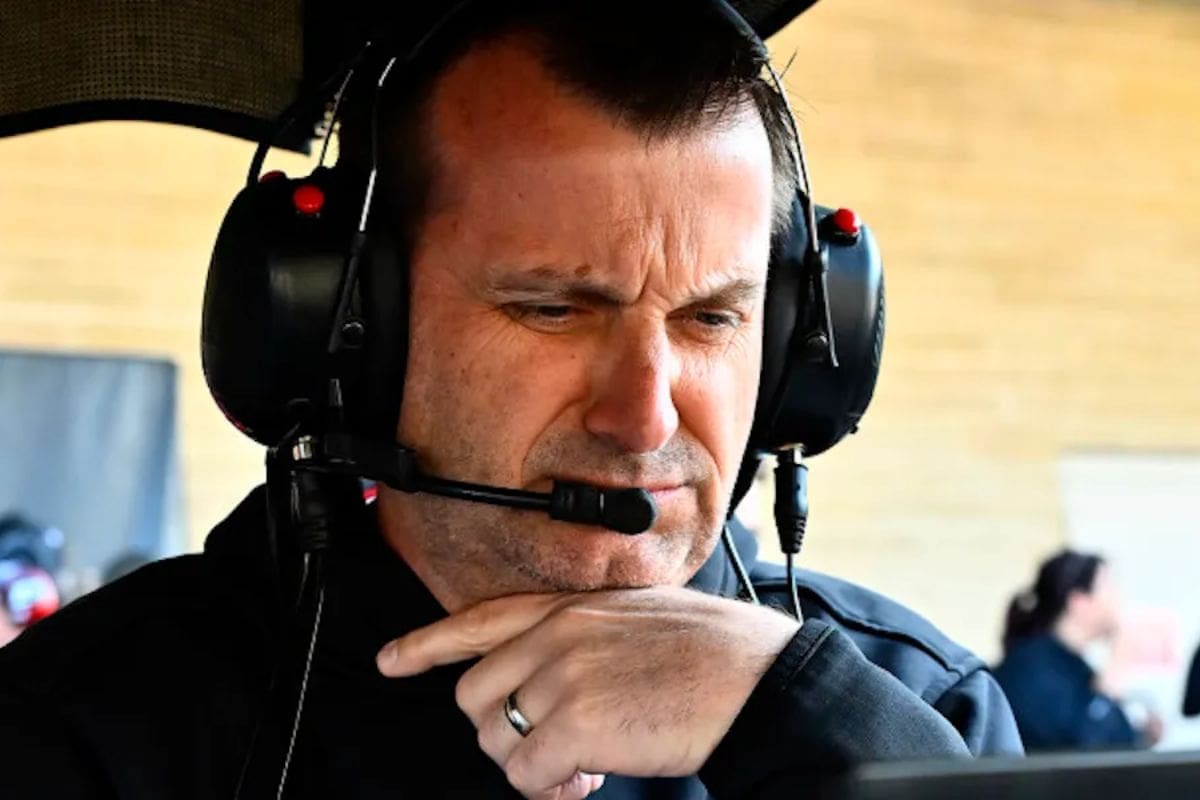Corey LaJoie’s Spire Motorsports Departure: The recent arrival of Rodney Childers at Spire Motorsports has prompted scrutiny regarding his compatibility with Corey LaJoie, raising questions about the latter’s future within the organization. Childers, known for his successful collaborations with veteran drivers, may have signaled a shift in team approach that overlooks LaJoie’s talents. This change reflects performance expectations and highlights deeper financial considerations and tactical alignments. As the dynamics within the team continue to evolve, one must consider how these changes will shape the competitive landscape and LaJoie’s next move.
Key Highlights
- Rodney Childers’ arrival at Spire Motorsports marked a strategic shift, indicating potential dissatisfaction with the current driver lineup, including Corey LaJoie.
- LaJoie faced performance challenges, failing to meet team expectations, which may have influenced Childers’ decision-making regarding driver selection.
- Financial dynamics play a role in driver retention; sponsorship considerations likely affected LaJoie’s standing with the team amid Childers’ arrival.
- The restructuring of the team, including LaJoie’s replacement, suggests Childers aims to implement a new competitive strategy and improve overall performance.
Rodney Childers Joins Spire Motorsports
In a notable alteration within the NASCAR landscape, renowned crew chief Rodney Childers has joined Spire Motorsports, marking a new chapter for both the veteran strategist and the team as they navigate a period of transformation.
Childers, celebrated for his tenure at Stewart-Haas Racing, brings with him a wealth of experience and a proven track record, including 40 wins and a championship victory with Kevin Harvick in 2004. His arrival at Spire Motorsports signals a tactical pivot for the organization, which has been seeking to improve its competitive edge in the evolving NASCAR environment.
The decision to recruit Childers comes at a significant point for Spire, as the team confronts the challenges of securing consistent performance on the track. Childers’ expertise in crew management and race strategy positions him as a valuable asset tasked with boosting the team’s comprehensive performance. His adeptness at developing drivers and fostering a winning culture will be instrumental as Spire Motorsports aims to redefine its identity in the NASCAR circuit.
However, the change raises questions about alignment with existing team dynamics, particularly in view of recent changes, including the departure of driver Corey LaJoie. Speculation surrounding Childers’ preferences regarding his crew and driver combinations may influence both immediate and long-term outcomes for Spire.
Spire Motorsports’ Changes for 2025
Spire Motorsports is poised for a groundbreaking 2025 season, as the organization implements noteworthy managerial and tactical changes aimed at revitalizing its performance on the NASCAR circuit. The arrival of veteran crew chief Rodney Childers marks a crucial shift in strategy, particularly following the challenging tenure of Corey LaJoie. The team recognizes the need for a clean slate, as articulated in their press release, emphasizing the necessity of a performance-driven approach.
“In racing, there are always variables but one thing we all know, is this is a performance-based business, and it just hasn’t been there for several reasons. All those reasons are factored in when it comes to making a decision of this magnitude. With Ryan (Sparks) moving upstairs, and Rodney (Childers) coming in next season, the best thing for Spire Motorsports is a clean slate for the No. 7 car in 2025.” – press release, Spire Motorsports
These changes reflect Spire Motorsports’ commitment to revitalizing its competitive stance in NASCAR. By addressing both managerial and operational aspects, the organization aims to build a more formidable presence on the track, ultimately seeking to convert potential into performance. The question remains, however, as to who will pilot the No. 7 car under Childers’ guidance, a decision that could prove crucial for the team’s future success.
Corey LaJoie’s Departure and Thoughts
The departure of Corey LaJoie marks a notable turning point for both the driver and Spire Motorsports, raising questions about the interplay of performance expectations and the financial dynamics that shape driver selections in NASCAR. LaJoie’s acknowledgment of his potential exit highlights the inherent challenges in the sport, where performance metrics and financial viability often dictate a driver’s fate. His straightforward remarks regarding the arrival of veteran crew chief Rodney Childers reveal an acute awareness of the competitive and often cutthroat nature of NASCAR.
LaJoie stated, “If you are not running towards the level of the expectations of your team, you will get shuffled out.” This admission emphasizes the delicate balance between achieving competitive results and meeting contractual obligations. The financial implications of driver contracts also loom large, as LaJoie pointed out the increasing tendency for seats to be filled based on financial backing rather than pure talent. The notion that “whoever goes in the seven is that situation” highlights the growing influence of sponsorship dollars in determining driver lineups.
“Nothing catches me off guard um because if you are not running the towards the level of the expectations of your team you will get shuffled out because contractually it doesn’t matter now it matters if you can make a little bit of money the following year or you get bought out but there are so many different variables and there’s so many politics behind the scenes.” – LaJoie
With LaJoie’s exit, questions arise about who will fill the #7 seat. Will Childers have the autonomy to choose his driver, or will external financial influences dictate the decision?
“There’s so many guys with legitimately checkbooks that can just be stroked to fill any seat like you’re buying tokens at Frank East fun park to drive race cars so that’s what you’re up against as well and not saying that whoever goes in the seven is that situation but it is wild uh the amount of flexibility in finances that these people who are kind of looking at situations to place them in.” – LaJoie
Rodney Childers’ Career Path
Rodney Childers’ journey from aspiring NASCAR driver to accomplished crew chief demonstrates the profound impact of personal tragedy and the evolution of career aspirations within the high-stakes world of motorsports. Initially, Childers harbored ambitions of competing at the highest levels of racing. His debut in the Xfinity Series for Jay Robinson Racing in 2000 marked the beginning of what he envisioned as a promising career. However, the grim realities of the sport soon overshadowed his aspirations.
The tragic loss of his close friend and fellow competitor, Adam Petty, deeply affected Childers, catalyzing a dramatic shift in his professional path. The emotional toll of Petty’s death, compounded by the loss of Kenny Irwin Jr., forced Childers to confront the inherent dangers of racing. As he openly expressed during an appearance on Kevin Harvick’s podcast, the cumulative grief led him to declare, “I’m done.” This crucial moment not only encapsulated his emotional struggles but also highlighted the fragility of life in the racing community.
“I remember screaming at home one day. I’m like, ‘I’m done.’ But it was hard for me to accept. You know how emotional I am. I raced every week against Adam Petty and I think that one hit me the most.” – Childers
Transitioning away from the driver’s seat, Childers found a new path within motorsports as a crew chief, where he could utilize his intimate knowledge of racing dynamics while remaining distanced from the perilous aspects of driving. This decision marked a significant turning point, allowing him to channel his passion for racing into a role that not only sustained his career but also positioned him as a respected figure in a different capacity within the sport.
Childers’ Transition to Crew Chief
Childers’ change to crew chief marked a vital evolution in his career, allowing him to utilize his extensive racing knowledge while embracing a role that emphasized strategy and teamwork over the inherent risks of driving. This transformation not only highlighted his mechanical expertise but also showed his capability to lead and inspire others in racing environment.
His tenure at Team Penske laid a solid foundation, where he honed his skills as a technician and developed a profound understanding of vehicle dynamics and performance optimization. However, it was his move to Stewart-Haas Racing that truly defined his path. There, he collaborated with Kevin Harvick to secure numerous victories, demonstrating his adeptness in strategizing race plans while fostering a cohesive team culture. This symbiotic relationship emphasized the importance of communication and trust between a driver and crew chief.
As Childers shifts to Spire Motorsports, the challenge lies in replicating that same success with a less established team. The implications for Corey LaJoie, who is currently in a precarious position, remain uncertain. LaJoie’s career could either flourish under Childers’ guidance or face further setbacks if the duo fails to align strategically.
Ultimately, Childers’ rise to crew chief represents not just a personal milestone but also a notable shift in the dynamics of the team he leads. His ability to navigate this landscape will be critical in determining both his future and that of LaJoie as they chart a course through the competitive landscape of NASCAR.
News in Brief: Corey LaJoie’s Spire Motorsports Departure
The arrival of Rodney Childers at Spire Motorsports has highlighted considerable tensions regarding Corey LaJoie’s position within the team.
The decision to part ways with LaJoie appears rooted in divergent performance expectations and tactical objectives.
Childers’ history with veteran drivers suggests a preference for competitors who can align seamlessly with his vision.
This change reflects a search for heightened competitiveness and emphasizes the evolving dynamics within the organization, ultimately reshaping its future path.
ALSO READ: Rodney Childers Prefers Brickyard 400 Over Championship: Reminisces with Ex-SHR Driver



